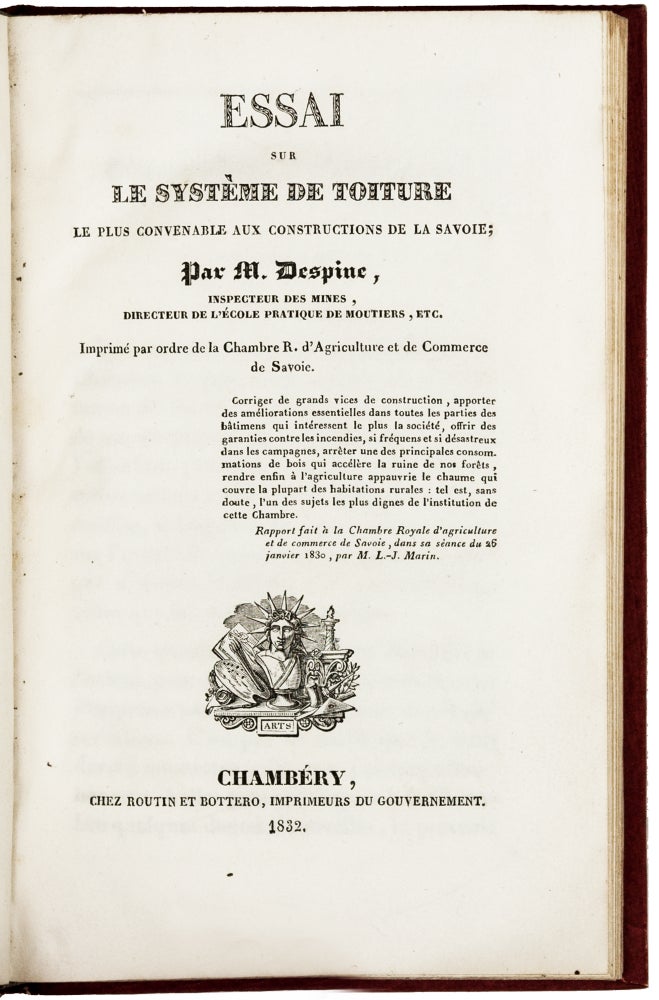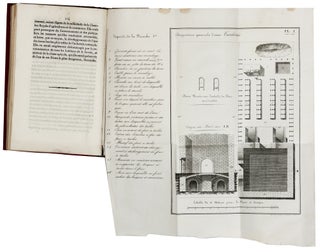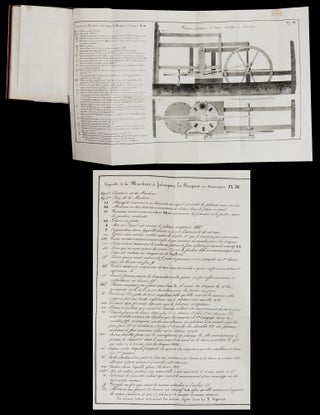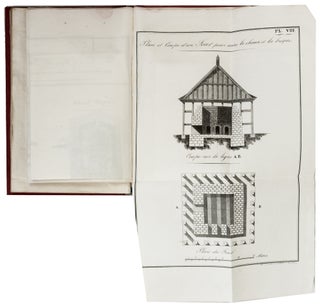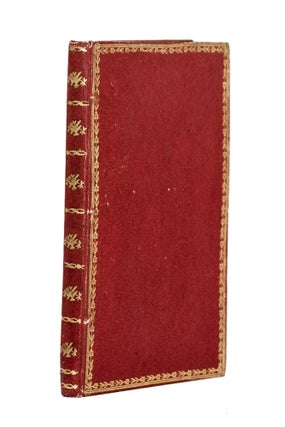Essai sur le système de toiture le plus convenable aux constructions de Savoie.
In duodecimo (195 x 130 mm): 120 pp., 11 lithographic plates; some occasional minor marginal staining towards end of volume. Bound in contemporary boards, spine and covers tooled in gold. Very fresh. Excellent. The first edition of a rare treatise on the roofing practices in the Duchy of Savoy by Charles-Marie-Joseph Despine (1792-1856), the secretary of the Royal Chamber of Agriculture and Commerce founded in 1825. The work focuses on various roofing customs and analyzes their advantages and disadvantages, providing a rich overview of the economic and social lives of the country's population in 1832. In the introduction, Despine defines his work as a proposition "on the defects of agricultural construction, on the danger of widespread fires in the countryside, and on the usefulness of replacing thatch and wood with other non-combustible materials such as tiles and slate" [p. 3]. Despine is showcasing not only the local Savoyan customs, but also the practices adhered to in the rest of Europe and even in the United States. Particularly interesting is Plate III on the production of bricks in America, accompanied by a detailed legend, describing all the necessary steps for their manufacture. The Duchy of Savoy, an independent state bordering Switzerland, Italy, and France, which became part of the latter in 1860, was predominantly an agricultural area. Most roofs were made from thatch or wood, which made them vulnerable to fire. Despine describes in detail the various local roofing materials and building practices, including thatch, wood, slate, terracotta, and bricks. He based his study on a comparative table with information on the population and the types of roofs in eight provinces of the duchy (Tarentaise, Haute-Savoie, Maurienne, Genevois, Savoie-Propre, Faucigny, Chablais et Saint-Julien). According to his data, the roofs of Sallanches, a town in Haute-Savoie, were made exclusively of wood. In fact, in 1840, eight years after the publication of this book, Sallanches was nearly destroyed by fire. Throughout the book Despine advocates the introduction of administrative and industrial policies to encourage the manufacture and use of tiles as the best roofing material. We could not find a complete copy of the book in the U.S. (Columbia University has a copy with only 2 plates out of 11). In Europe, copies are available in Turin (Biblioteca dell'Accademia di agricoltura), Geneva (Musée d'ethnographie), Annecy (lacking one plate), and Lons le Saunier. *Hermann, Architecture et vie traditionnelle en Savoie (1999), pp. 169-171; Grandchamp, "La Vie quotidienne d'un élève de l'École des Mines à la fin du Premier Empire, d'après les carnets de Charles-Marie-Joseph Despine," in Essais sur l'histoire de la géologie en hommage à Eugène Wegmann (1896-1982), pp. 65-70.
Sold

